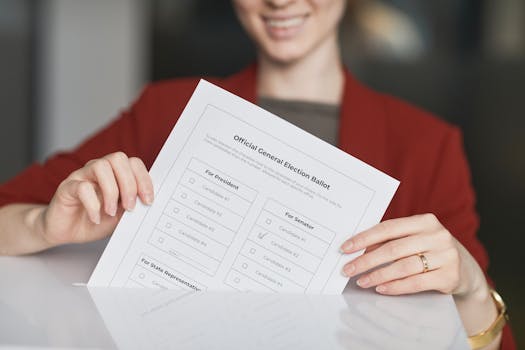
Landmark Supreme Court Decisions: How 30 Years of Rulings Reshaped Voter ID Laws in the US
Since 1995, the Supreme Court has rendered several pivotal decisions significantly impacting voter identification laws across the United States. These rulings have shaped the ongoing debate surrounding election integrity, voting rights, and access to the ballot box for all eligible citizens. This article examines key Supreme Court cases and their lasting effects on voter ID requirements, exploring the legal battles, political ramifications, and ongoing implications for voter access and election security. Keywords like voter ID laws, election integrity, voting rights, Supreme Court decisions, voter suppression, and access to the ballot box will be strategically incorporated throughout the text to optimize search engine visibility.
The Rise of Voter ID Laws and Early Challenges (1995-2000)
The late 20th century saw a gradual increase in states enacting stricter voter ID laws, often justified as measures to prevent voter fraud. However, these measures disproportionately impacted certain demographics, leading to legal challenges. While no major Supreme Court case directly addressed voter ID in this period, lower court rulings laid the groundwork for future challenges. The focus was primarily on the balance between preventing fraud and ensuring equal access to the ballot, a tension that continues to define the debate today.
Early Litigation and the Focus on Equal Protection
Early litigation centered around the Fourteenth Amendment's Equal Protection Clause, arguing that stricter ID requirements disproportionately disenfranchised specific groups, such as elderly citizens, low-income individuals, and minorities who may lack readily available photo identification. These early cases established the legal framework for subsequent Supreme Court reviews, setting the stage for a more rigorous examination of the constitutionality of voter ID laws in the years to come.
The Key Turning Point: *Crawford v. Marion County Election Board* (2008)
The 2008 Supreme Court case, Crawford v. Marion County Election Board, proved to be a watershed moment. Indiana's voter ID law, requiring government-issued photo identification, faced a challenge based on its potential to disenfranchise voters. The Supreme Court upheld the law, arguing that the state's interest in preventing voter fraud outweighed the potential burden on voters.
The *Crawford* Ruling and its Lasting Impact
The Crawford decision did not establish an absolute standard for voter ID laws. Instead, it provided a framework for evaluating such laws, focusing on whether the state's interest in preventing fraud was sufficiently compelling and whether the chosen means were narrowly tailored to achieve that goal. This ruling emboldened other states to implement stricter voter ID laws, setting off a new wave of legal challenges and intense political debate around voter suppression and the right to vote.
Post-*Crawford* Litigation and the Ongoing Debate (2008-Present)
Following Crawford, several states enacted stricter voter ID laws, resulting in a surge of litigation. These cases highlighted the ongoing tension between the state's interest in securing elections and protecting the right of all eligible citizens to vote. The focus increasingly shifted to the practical implications of voter ID laws, including the availability of acceptable forms of identification, the accessibility of obtaining such identification, and the potential for discriminatory enforcement.
Challenges to Voter ID Laws and Access to the Ballot Box
Subsequent litigation examined various aspects of voter ID laws, including:
- The burden imposed on voters: Challenges focused on the difficulty and cost for certain populations to obtain the required identification.
- The availability of alternative forms of identification: Cases questioned whether states provided sufficient options for voters who lacked the required photo ID.
- The potential for discriminatory enforcement: Allegations of unequal application of voter ID laws based on race or ethnicity further fueled legal battles.
These challenges continue to highlight the complexities and potential unintended consequences of voter ID laws, specifically questioning their impact on access to the ballot box for vulnerable populations.
The Future of Voter ID Laws and Election Integrity
The Supreme Court's decisions since 1995, particularly Crawford v. Marion County Election Board, have significantly shaped the landscape of voter ID laws in the United States. While the Court has generally upheld such laws, it has also acknowledged the need to strike a balance between preventing fraud and ensuring equal access to the ballot.
Ongoing Legal Challenges and Political Polarization
The debate surrounding voter ID laws remains highly polarized, with ongoing legal challenges and fierce political battles. The discussion extends beyond simply preventing fraud and touches upon broader issues like election integrity, voter access, and the fundamental right to vote. This ensures the topic will remain a significant area of legal and political attention for years to come.
The Need for a Balanced Approach
Moving forward, there's a need for a balanced approach that addresses concerns about election security while protecting the fundamental right to vote for all eligible citizens. This includes ensuring reasonable access to voter identification for all, regardless of socioeconomic status or geographic location. Any future legal challenges or legislative changes will likely continue to grapple with these intricate aspects of voting rights and election integrity. The Supreme Court's future role in defining the parameters of acceptable voter ID laws will remain critical. This underscores the importance of continued dialogue and engagement on this profoundly impactful issue.




















